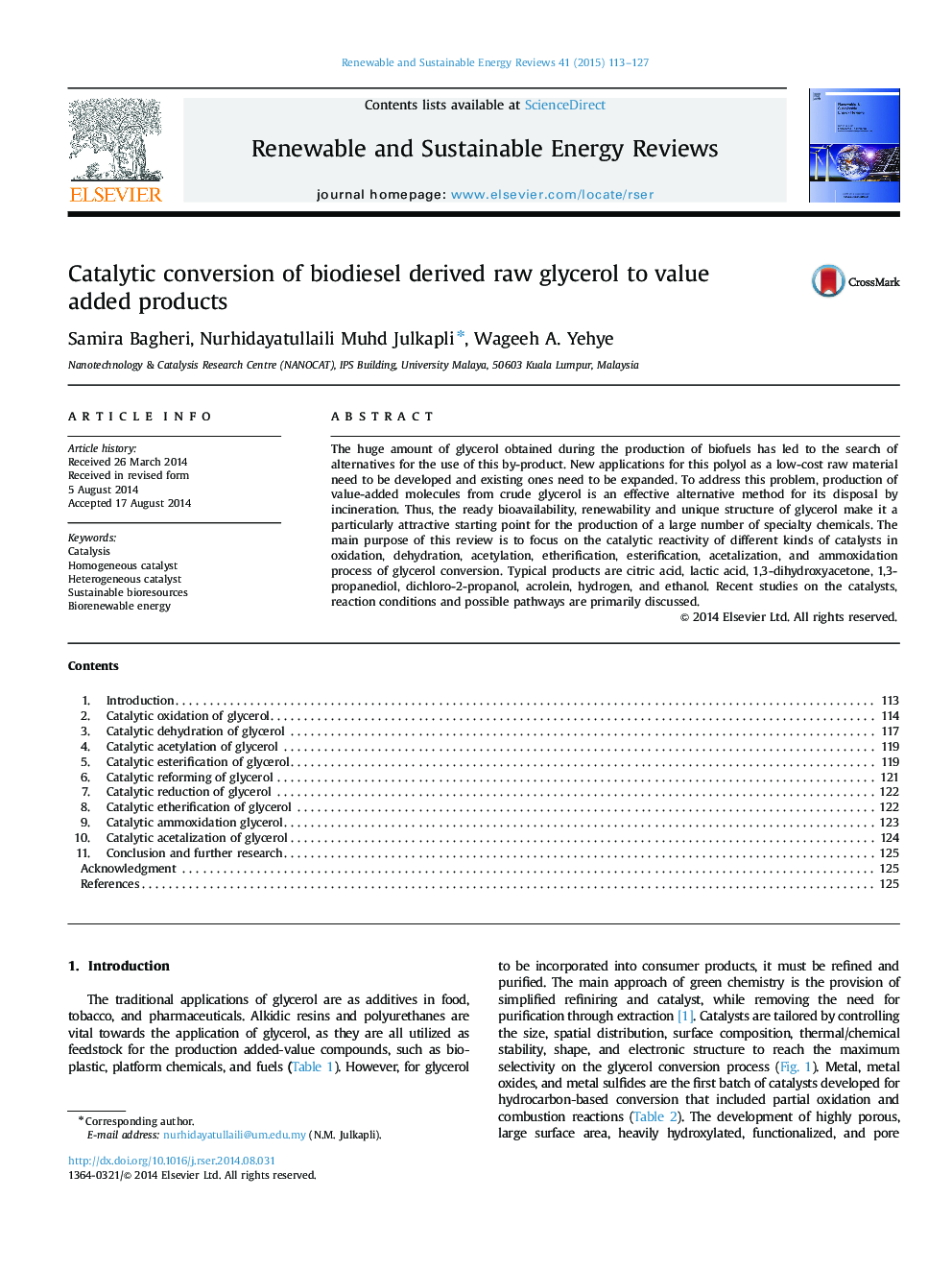| Article ID | Journal | Published Year | Pages | File Type |
|---|---|---|---|---|
| 8118332 | Renewable and Sustainable Energy Reviews | 2015 | 15 Pages |
Abstract
The huge amount of glycerol obtained during the production of biofuels has led to the search of alternatives for the use of this by-product. New applications for this polyol as a low-cost raw material need to be developed and existing ones need to be expanded. To address this problem, production of value-added molecules from crude glycerol is an effective alternative method for its disposal by incineration. Thus, the ready bioavailability, renewability and unique structure of glycerol make it a particularly attractive starting point for the production of a large number of specialty chemicals. The main purpose of this review is to focus on the catalytic reactivity of different kinds of catalysts in oxidation, dehydration, acetylation, etherification, esterification, acetalization, and ammoxidation process of glycerol conversion. Typical products are citric acid, lactic acid, 1,3-dihydroxyacetone, 1,3-propanediol, dichloro-2-propanol, acrolein, hydrogen, and ethanol. Recent studies on the catalysts, reaction conditions and possible pathways are primarily discussed.
Related Topics
Physical Sciences and Engineering
Energy
Renewable Energy, Sustainability and the Environment
Authors
Samira Bagheri, Nurhidayatullaili Muhd Julkapli, Wageeh A. Yehye,
